Measure Twice…
For our first post we will be going back to the basics in choosing your wood, elaborating on how lumber is measured and milled, and how to calculate enough material so you don’t come up short!

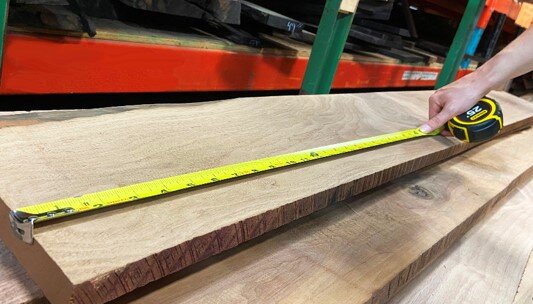
1. Start thick
Rough sawn lumber is measured in ¼”. increments. The thinnest rough-cut boards, labelled 4/4, and called four-quarter, are 1-in. thick.
Typically, you will lose 3/16” (1/4” on thicker stock) when you plane a rough sawn board smooth so you will have to calculate accordingly.
We stock 4/4, 5/4, 6/4 and 8/4 thicknesses in most species like Poplar, White Oak and Purpleheart, as well as 10/4, 12/4, 16/4 in a number of species.
2. Be prepared
Be sure to bring a tape measure to measure the boards you choose and figure out how much they’ll cost. When measuring, round up the actual measurement to the nearest 1/2”.
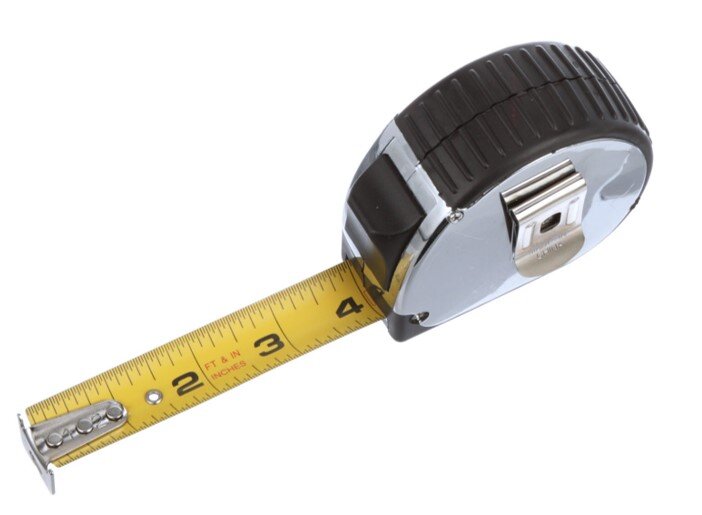
We have ones you can borrow if you forget!
Because rough sawn boards come in random widths and lengths, they’re measured by volume, which can be calculated by using a simple formula:

Rough lumber is sold based on its cost per BF. Some species are pricier than others, and generally speaking, the thicker board the higher the cost per BF. To determine your cost, simply multiply the total number of BF in the boards you’ve selected by the BF price.
Unlike rough lumber, dressed lumber (surfaces machined all 4 sides or D4S) is measured and sold per linear foot (LF) or per running foot. Maple, Walnut and Padauk are just three of the dozens of species we carry in dressed lumber.
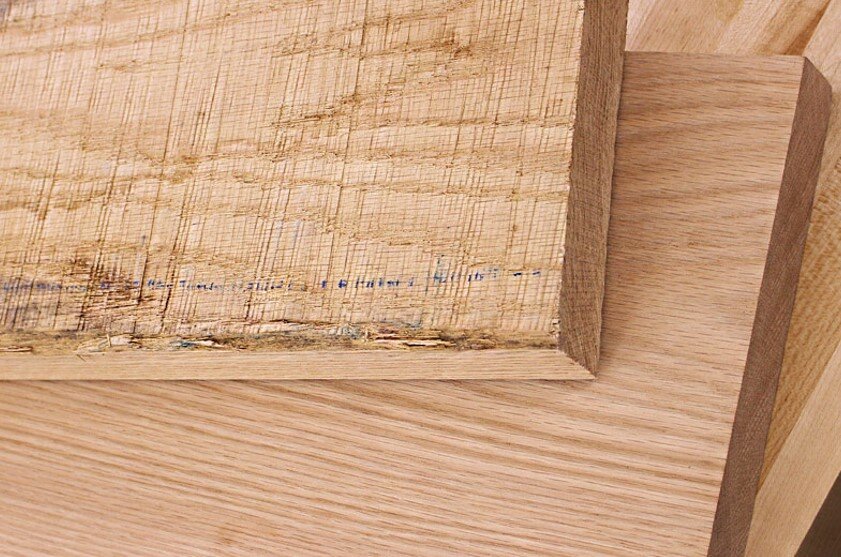
Rough vs Dressed
3. Buy long
Rough sawn boards are regularly cut a couple of inches long, but they often have checks in the ends, knots or wild grain that you’ll want to cut off. It is very unlikely that you will get an 8-ft. usable length out of an 8-ft. rough sawn board. If you need finished 8-ft. lengths, you may need to buy 9 or 10-ft.- long lumber.
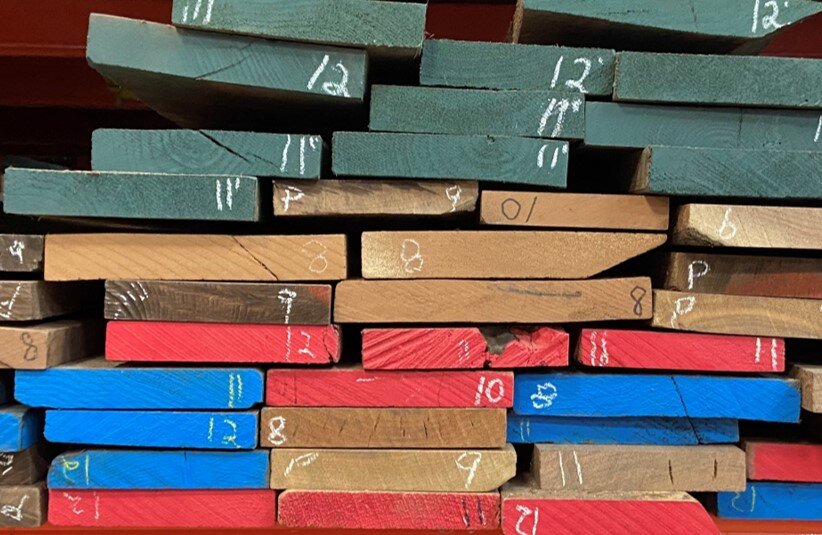
Ends need trimming…buy extra.
4. Exactly enough, isn’t.
Because rough lumber isn’t perfect and even top-grade boards allow for a few defects, it’s a good idea to plan for contingencies. Having extra on hand saves you a trip for one more piece, even though we’d be happy to see you.
A common practice is to buy 15 to 20 percent more than you need. Some species, like red oak, are relatively consistent with few defects, so you won’t need as much extra. Other species, like black walnut (often showing end checks and knots and wain), require more insurance than the average.
If you don’t want to bother with calculating exact percentages; it is far easier just to buy an extra piece. For example, if you’re going to build a table, choose enough stock to make an extra leg. If the top requires seven boards, consider buying eight.
5. Look for hit-and-miss.
It is becoming more common for our stock to be offered as surfaced hit-and-miss (H/M, also referred to as “skip-dressed”). H/M planing, skims the board’s rough surfaces to make choosing good-looking boards easier: you can see what they look like without having to guess. Even if they’ve been buying rough lumber for years, people (including all of us) still get fooled. It can be difficult to see the figure, grain pattern and colour in a rough sawn board; H/M planing helps you avoid buying unsuitable boards.
Skip dressed boards are also easier on your tools because the rough top layer, which often contains dirt and other debris, has been partially removed.
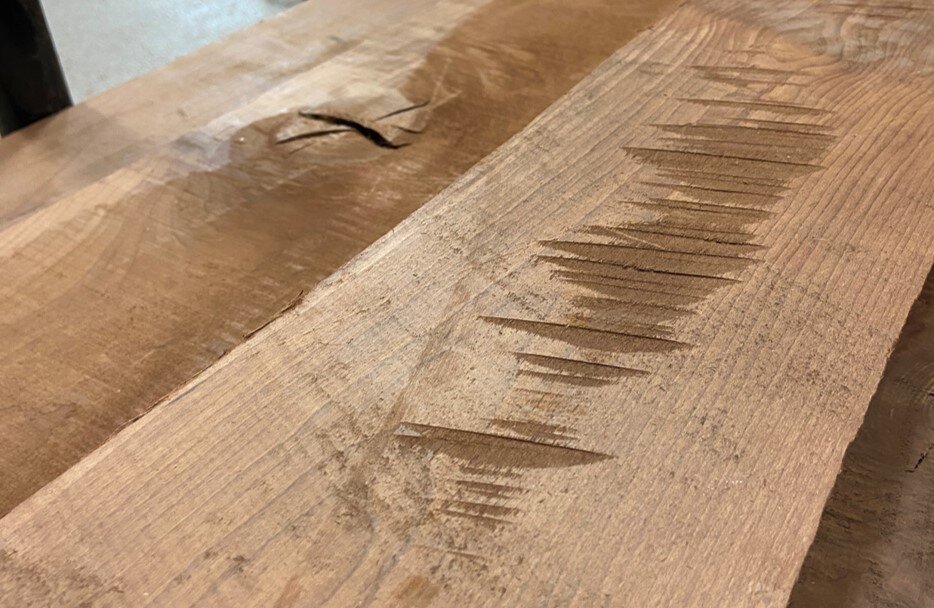
Hit and Miss surfacing…there’s still work to do.
There is a downside, though. First, you’ve got less thickness to work with. H/M-surfaced boards are usually 1/16-in. thinner than the rough thickness (4/4 H/M stock is typically 15/16-in. thick). Second, H/M boards still need to be finish-planed. Their surfaces are coarse and usually contain portions that are still rough (hence the name). And third, H/M planing doesn’t flatten warped boards.
If you’d like to know more about how boards are milled or if you require assistance in selecting material, our educated and experienced staff are always happy to help! You are always welcome to phone the store (905)-335-8066 or send us an e-mail (info@exotic-woods.com) with questions.
For information on selecting the right specie for your project and the differences between more common species look out for our next blog post!
